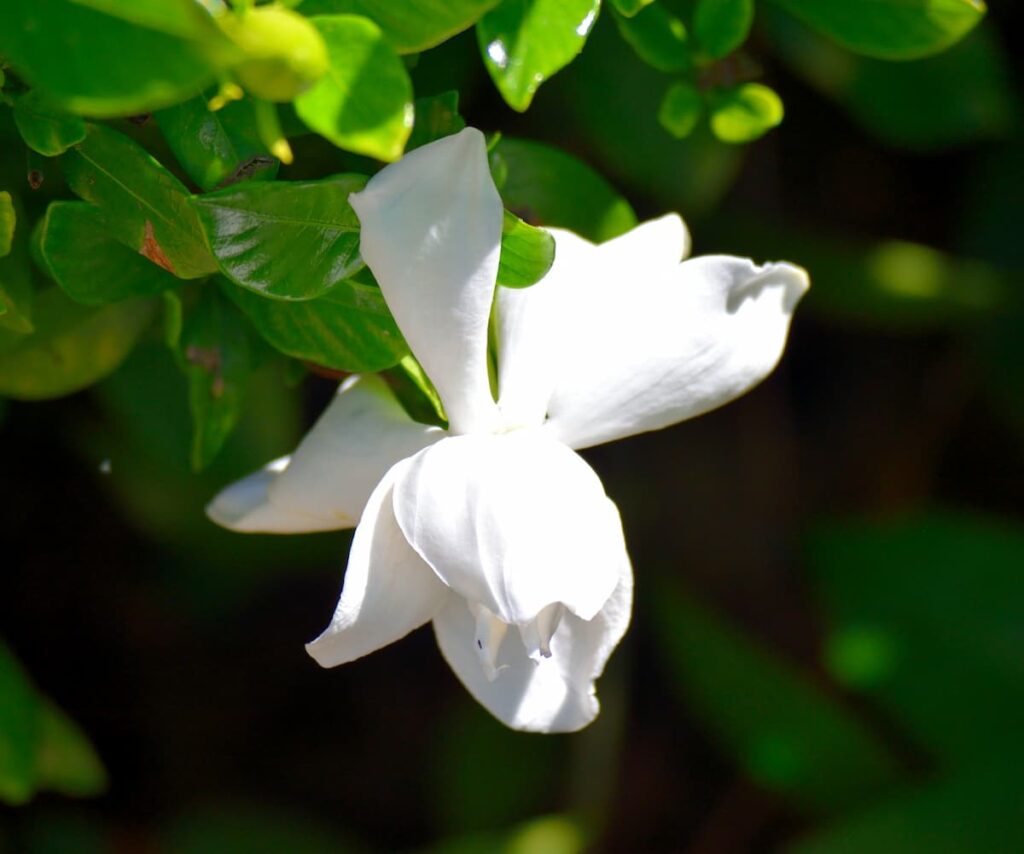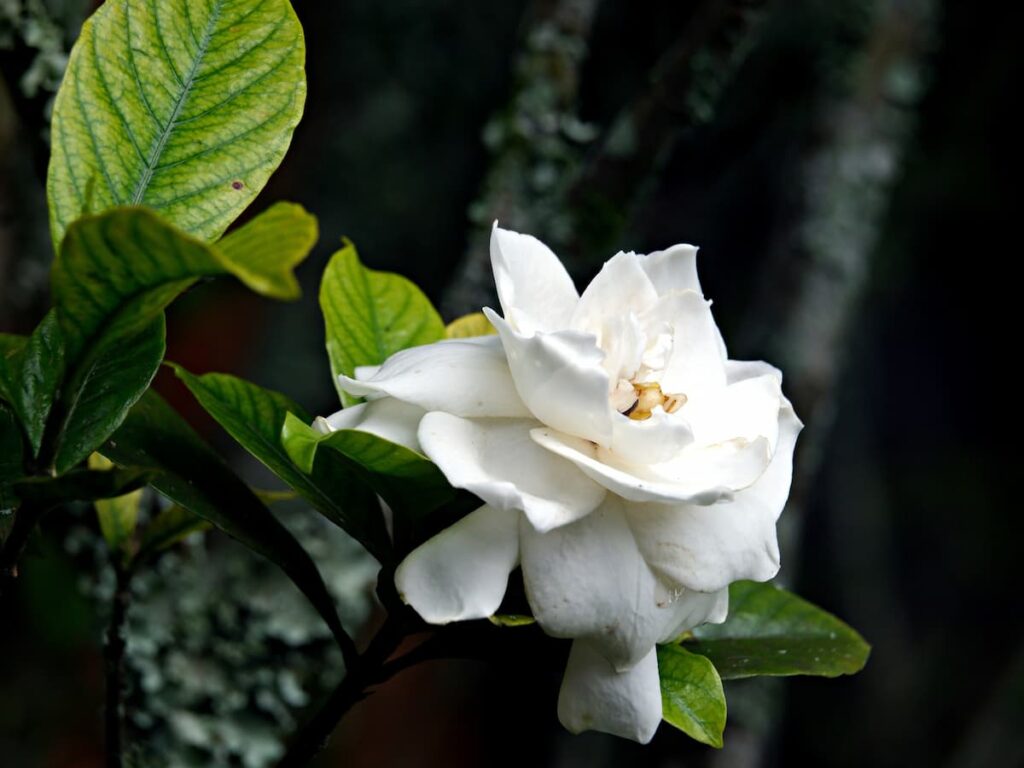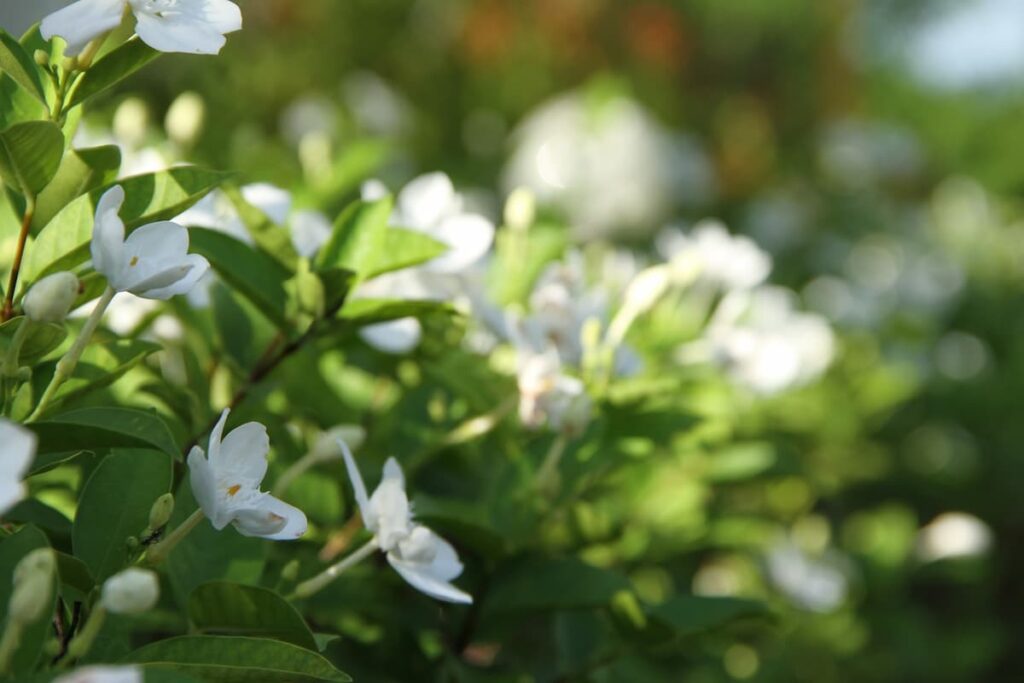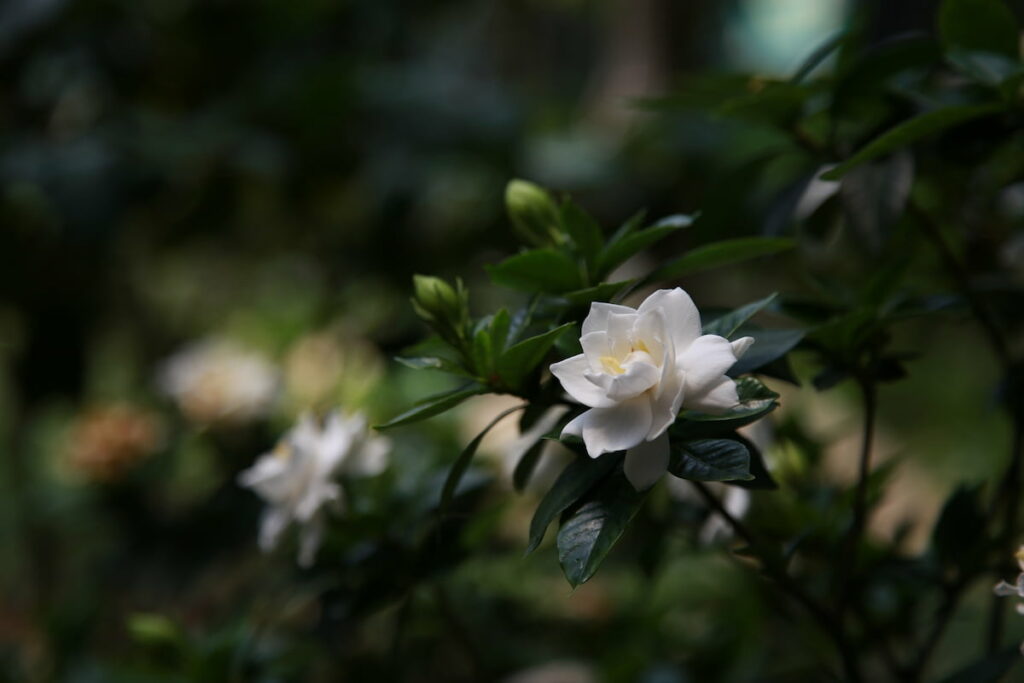Gardenias are tall, slender, deciduous trees or shrubs with beautiful flowers. Gardenias are delicate flowers that require special care when growing. With the proper knowledge, you can grow Gardenias from cutting to harvest in a controlled and sustainable way. The fragrant Gardenia flower has a long stem and large, showy blooms with five striped yellow and green petals on top. Gardenia, from cutting to harvest, is a fun, easy way to grow this beautiful flowering plant.

How to grow Gardenias from cuttings
How long do Gardenias take to grow from cuttings?
- Gardenias are perennial flowers that grow from cuttings taken in the spring or summer. New growth will emerge within 4 to 6 weeks. For the plant to bloom, it will need a winter chill.
- Gardenia cuttings take around 6 to 12 weeks to bloom, but the blooming process can vary depending on the cultivar. Some Gardenias may not flower at all, while others may take up to three months. Once blooming begins, look for dense clusters of white or purple flowers. Once the flowers begin to open, they will last for a few days before eventually wilting.
Growing Gardenias from cutting
Gardenia plants can be started from cuttings taken from a mature plant. Prune the stem to about 1 inch long and make a small, clean cut just below a node or point where the stem and leaves meet. Remove any leaves or other attached growth from around the cutting, then slice the bottom of the cutting off near the root ball. Place the cutting into fresh, moist soil and water thoroughly. Water sparingly and let them go dry during the day. At night, water lightly again if necessary.
Why are Gardenias so hard to grow?
Gardenias are a popular but notoriously hard-to-grow flower. They need much bright, direct sunlight and consistent moisture to thrive. The flowers also tend to be fragrant, so if your Gardenia plants get too shaded or waterlogged, they may produce fewer fragrant flowers. Gardenia flowers also have a short lifespan, usually lasting only a few days which makes them prone to dying from overwatering.
In case you missed it: 25 Flowers for Container Gardening: Top Best List and Easy for Beginners

Growing Gardenia cutting in the pot
- Gardenias do best in pots, and they appreciate light but also some privacy. Gardenias generally like a moist soil mix with good drainage and regular watering. They must be planted in the ground in tropical climates, but in colder areas, they can be grown indoors on a sunny windowsill or near a warm window.
- Choose healthy flowers with strong stems and remove the tap root by cutting it below where it emerges from the ground. Place the cutting into potting soil mixed with perlite or vermiculite for extra humidity and warmth, then water well until roots form. Keep the plant warm and humid until roots have developed sufficiently to plant out into your desired location outdoors in early spring.
What causes Gardenia leaves to turn yellow and fall off?
Gardenias are beautiful and fragrant flowers but can be challenging to grow. Root rot is one of the main causes of Gardenia leaves turning yellow and falling off. Lack of oxygen or moisture in the soil can cause root rot, which can be due to drainage problems, strong winds, or overwatering. To prevent Gardenia root rot, ensure your soil is well-drained, give your plants plenty of water, and fertilize regularly. You can also try using an organic fertilizer that contains nitrogen. Remove affected leaves and roots by hand or with a pruner. Cut away diseased roots during transplanting.
Deadheading Gardenias
- Gardenias require little maintenance once they are established, and they produce a significant number of flowers. Deadheading Gardenias is one way to increase their production. By removing the spent flowers, you will encourage new buds to form.
- Deadheading Gardenias produce more flowers than those that are not deadheaded. The easiest way to tell if a Gardenia needs to be deadheaded is to look for blooms that have faded and spread apart from the other blossoms on the plant.
In case you missed it: How to Grow Gerbera Daisies from Seed: A Guide to Planting to Harvest for Beginners

Sun requirement for growing Gardenias
Gardenia flowers grow best in full sun. Gardenia cuttings need bright sunlight for the best growth. Place the cutting in a sunny spot outdoors or on a windowsill where light can reach it throughout the day if you live in a northern climate, plant Gardenias outdoors in the fall when temperatures are cool, and then move them into your home once the weather starts to warm up.
How many years do Gardenias last?
Gardenias are beautiful plants that can last up to 10 years if cared for properly. Remember that Gardenias do not like wet soil, so water them regularly. Do not over-fertilize them, as this will cause them to become leafy and less fragrant. Gardenias also require moderate sunlight and should be positioned to receive morning or afternoon sun. Remember to water it well and fertilize it occasionally to ensure a long life for your Gardenia flower.
The best fertilizer for growing Gardenias
Many different types of fertilizers can be used to grow Gardenias. One option is to use an organic fertilizer, such as a compost-based fertilizer. Another option is to use an artificial organic fertilizer, such as one with potassium. You should choose the right fertilizer for your Gardenia plants and read the label carefully to know what nitrogen, phosphorus, and potassium levels are included in the product. Gardenias like fertilizer but use it sparingly. A tablespoon of nitrogen per quart of water is about right. If you overfertilize, the plant will become leggy and spindly, and the flowers will be small and irregular.
Growing Gardenia cutting in water
- Gardenia cuttings rooted in water can produce plants that can be transplanted outside, but they may not grow as robustly as those rooted in soil. Gardenia cuttings taken from vigorous plants will likely be more tolerant of transplanting and grow more quickly if rooted in water.
- Gardenia cuttings can be rooted in water, but you must mist the roots daily to keep them moist. Once the cutting has rooted and grown a few inches, you can transfer it to the soil. Gardenias are tropical plants that like warm temperatures and humidity.
In case you missed it: Top 12 Attractive Foliage Plants for a Sunny Balcony Garden

Water requirement for growing Gardenias
Watering cuttings is an essential step in the growth of Gardenia. To be successful with Gardenia growing from cuttings, it is necessary to follow a strict watering schedule. Constantly water your cutting medium well and keep the surface of the soil dry between irrigation cycles. This will help ensure healthy growth and prevent root rot.
How many times a year do Gardenias bloom?
The Gardenia is a beautiful subtropical flower that typically blooms twice a year, once in the spring and fall. During the spring, Gardenias will bloom from early to mid-April through May. In the fall, Gardenias will bloom from late September through October. To grow Gardenias from cuttings, start by rooting healthy, fresh cuttings taken from plants at least two years old. Give the cuttings plenty of water and light, then place them in a moist medium such as sphagnum moss. Keep the medium moist but not wet, and wait six to eight weeks until new roots have grown out from the end of the cutting. Then transplant the cutting into a larger potting mix and water regularly.
Pruning Gardenia
- Gardenia cuttings are a great way to get bushier Gardenias. When taking the cutting, make sure the stem is long enough so that the cutting has a good root ball on it when you transplant it into the soil. Gardenias are beautiful flowers that can grow tall and must be trimmed regularly. Trimming the stem back to a height of 1-2 inches will keep the plant in check and help it to look its best. If you are growing Gardenias from cuttings, make sure to take care not to damage the roots while taking the cuttings.
- Gardenias should be pruned every two years to keep them small and dense. Pruning should also be done if flowers fade or decline in appearance due to lack of water or fertilizer. Gardenias need well-draining soil with ample organic matter and full sun exposure at maturity.
Why does my Gardenia have buds but not blooming?
Flowering plants require warmth and humidity for optimal growth and flowering. Make sure that you’re planting your Gardenia in the correct location. The soil should be well-drained but rich in organic matter. Gardenias like acidic soils with a pH below 6.0; try using limes or horticultural sulfur instead of fertilizers if your soil is too alkaline for Gardenias. Gardenia flowers are best planted in full sun but can tolerate partial shade. Gardenias need regular pruning.
In case you missed it: How to Grow Petunias from Seed: A Beginners Guide to Planting to Harvest

Tips for forcing Gardenia to bloom
- Start by rooting a cutting in moist sand or soil if you want to force a Gardenia to bloom. Gardenias like moist, well-draining soil, so clean the cutting regularly. Once rooted, give the cutting plenty of light and keep it warm in winter. Your Gardenia will blossom in late summer or fall if all goes well.
- You can also add some organic matter, such as compost or manure, to the soil before planting them. Another thing you can do is cut the stem of the Gardenia right before it blooms so that it will stop flowering and start producing new flowers.
When to take Gardenia cuttings?
Gardenia cuttings can be taken from early growth points on the plant. They can also be taken from older stem tips. Gardenia cuttings should be about 1-inch long and taken with fresh, clean hands. Planting materials such as soil, sand, or perlite should not be used to moisten the cutting because it will prevent the cutting from rooting quickly. Once the cutting is placed in a pot of fresh soil, water it well and waits for new roots to form before putting it in a bright spot.
The best soil for growing Gardenias
The best soil for Gardenia is an amended mixture of sand, loam, and clay. Gardenias is like a warm, sunny spot with plenty of water. Gardenia plants are grown in rich, well-drained soils that are also slightly acidic. Adding organic matter, such as compost or shredded leaves, may be beneficial if you have heavy clay soil. Gardenias like full sun but can tolerate partial shade. They are drought tolerant once established but appreciate regular watering once they bloom. Gardenia plants are susceptible to root rot and fungal diseases, so they must thoroughly use a good potting mix and water.
In case you missed it: Top 15 Indoor Garden Plants to Remove Air Toxins

When do Gardenias bloom?
Gardenias are perennials that grow from a cutting to a harvest. Bloom time can vary based on location. Many factors influence bloom time, including temperature, humidity, sunlight, and fertilization. During the spring, Gardenias will bloom from early to mid-April through May. In the fall, Gardenias will bloom from late September through October.
Conclusion
Gardenias are flowering plants in various colors, including white, pink, red, and yellow. Gardenias can be grown from cuttings taken from the stem of the plant. Gardenia is a subtropical flowering plant that can be grown from cutting to harvest in a garden. Gardenias are best propagated by division or root cuttings taken from vigorous, healthy plants. Gardenias require little care once they are established and growing, making them the perfect beginner’s garden flower.
- How to Grow Hibiscus from Flower
- Plantation Ideas for Home Decoration: A Beginners Guide
- Flower Garden Designs and Layouts for Beginners
- Planting and Spacing Techniques in Papaya: A Beginner’s Guide
- Growing Gold: Essential Techniques for Planting Pineapples
- How to Make Kalanchoe Plant Bushy: Home Remedies and Solutions
- 11 Reasons Why Your Gardenia is Not Blooming: Home Remedies and Solutions
- Eco Elegance: The Guide to Designing a Drought-Tolerant Landscape
- Gardening on a Slope: Strategies for Hillside Landscaping
- Nourish and Flourish: Top Organic Mulches for Thriving House Plants
- Everything You Want to Know about Indian Mogra Flower: Discover Uses and Growing
- Green Thumb Success: Expert Tips for Cultivating Greenhouse Pumpkins All Year Round
- Maximize Growth & Flavor: The Ultimate Guide to Companion Planting in Herb Gardens
- How to Control Rhododendron Problems Naturally: Home Remedies and Organic Ways to Fix Them
- Natural Magic: The Remarkable Benefits of Cinnamon for Plants
- Best Steps to Revive Dying Tulip with Natural and Organic Treatment
- 10 Reasons Why Your Angel Trumpet is Not Blooming: Remedies and Treatment
- How to Fix Periwinkle Leaf and Flower-Related Problems: Natural Remedies and Solutions
- How to Fix Zinnias Leaf and Flower Problems: Discover Natural and Home Remedies
- Organic Steps to Induce Lemon Tree Flowers: A Comprehensive Guide
- Bloom Booster: Crafting the Perfect Homemade Bougainvillea Fertilizer
- Optimizing Growth: A Guide to Applying NPK Fertilizer for Potted Plants
- 10 Best Homemade Fertilizers for Rubber Plant: DIY Recipes and Application Method
- How to Boost Female Pumpkin Flowers: Effective Steps for More Flowers and High Yields
- Transform Your Indoor Garden: Top Benefits of Pink Salt for Houseplants
- 10 Best Homemade Fertilizers for Peacock Plants (Calathea): Easy DIY Guide
- Unlock Blooms: 9 Reasons Why Your Potted Chrysanthemum is Not Blooming
- 8 Reasons Why Your Potted Hibiscus is Not Blooming: Fix it with Simple Solutions
- Unlock Blooms: 9 Key Reasons Your Potted Frangipani Won’t Flower
- 10 Reasons Why Is My Ice Plant Not Blooming: Remedies and Treatment
- 10 Reasons Why My Potted Hydrangea Not Blooming: Treatment and Remedies
- 10 Reasons Why is My Wisteria Not Blooming: Remedies and Treatment
- 10 Reasons Why is My Goldfish Plant Not Blooming: Remedies and Treatment
- Maximize Your Space: Ultimate Guide to Balcony Gardening with Grow Bags
- 10 Reasons Why Your Iris is Not Blooming: Remedies and Treatment
- 10 Reasons Why Your Anthurium Plant is Not Blooming: Treatment and Remedies